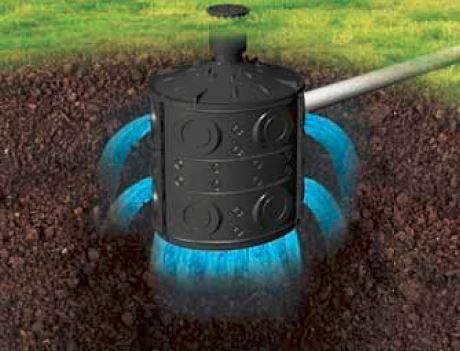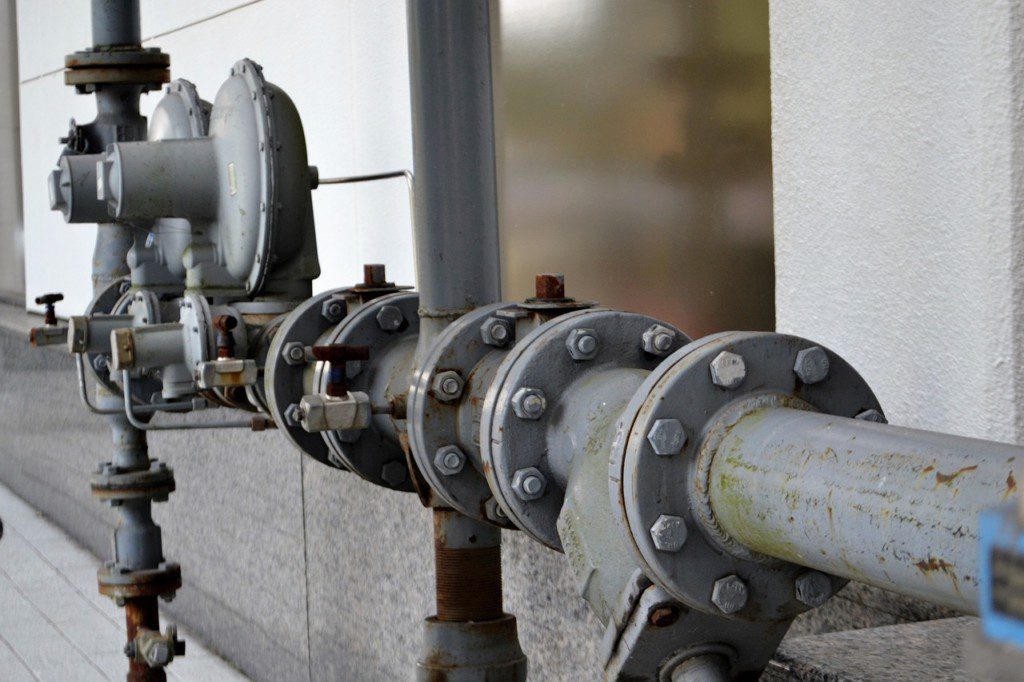10/18/2021 | Storm Water | 8 MINUTE READ
What is Included in a Stormwater Leaching Program?

Whenever a thunderstorm passes by or rain moves through your area, stormwater is created and can lead to runoff. Stormwater runoff can collect many different contaminants while the water is flowing throughout streets and yards. These contaminants include pet waste and harmful fertilizers. In the event that the stormwater runoff is moving quickly, it can erode stream banks and push excess nutrients into streams and rivers.
It’s possible to collect stormwater to reduce the damaging effects of this water by using a stormwater leaching system. Stormwater leaching involves collecting this water and eventually discharging it directly into the nearby subsoil. This system is environmentally friendly because it reduces stormwater runoff and allows the water to be naturally filtered through the subsoil.
Before you purchase one of these systems, it’s important to understand that the Environmental Protection Agency regulates these systems. These regulations are designed to ensure that the systems are properly maintained and that they don’t inject too many harmful chemicals and contaminants into the subsoil below. Stormwater drainage wells are commonly used by:
– Community associations
– Industrial and commercial facilities
– Private and public institutions
– Local, state, and tribe governments
– Private citizens
The following guide takes a look at the many benefits of stormwater leaching programs and the best practices that will help you manage these systems.
Benefits of a Stormwater Leaching Program
There are many benefits associated with using a stormwater leaching program, which can be separated into environmental benefits and competitive benefits. Consider weighing these benefits against the costs before making a decision.
Environmental Benefits
The primary environmental benefits attributed to stormwater leaching programs include:
These systems are made entirely from recycled plastic, which is much more beneficial for the environment than using metallic components.
Stormwater is able to be filtered naturally through the subsoil below, which helps to reduce any contaminants present in the water.
The total volume of runoff should be reduced, which lessens the possibility of soil erosion and flooding.
Groundwater tables are fully replenished by on-site stormwater discharge.
Competitive Benefits
The competitive benefits that you can take advantage of include:
Water can be discharged quickly and rapidly underground.
Using this type of system allows you to effectively eliminate driveway and landscape damage caused by stormwater runoff.
The system has a very simple and straightforward installation process since heavy equipment isn’t necessary.
By installing the system at an underground location around your home, you should be able to eliminate water puddles in your yard, which will enhance your home’s curb appeal.
These systems are considerably more cost-effective when compared to larger piping systems that are designed to transport stormwater to various discharge points.
Federal Requirements for Stormwater Drainage Wells
Before you decide to use a stormwater drainage well, it’s important to understand that usage of these wells comes with federal requirements that you must adhere to. These requirements are meant to make sure that the drainage wells are maintained and those harmful pollutants aren’t discharged into the subsoil. Along with the minimum EPA guidelines, some states have been allowed to implement a Class V UIC program within their state, which could come with stricter requirements.
You can navigate to the permitting authority web page to identify which agency oversees stormwater drainage wells in your state. Keep in mind that you’re responsible for finding out what your state’s drainage well requirements are. A state like California has set its own guidelines and requirements that are overseen by the California Regional Water Quality Control Board. You can read more about these requirements at this link.
One requirement in California is that anyone who wants to use an injection well must file a discharge report. Some aspects of stormwater drainage wells that are regulated by California and the EPA include:
Building setback – A minimum of 10-20 feet
Soil – Can’t be used in soils that contain more than 40% silt or more than 30% clay
Separation – At least 100 feet
Public supply wells – Setback minimum of 100 feet
Water table – At least 3-10 feet of separation between the seasonal high-water table and the dry-well bottom
Dry-well surface inlet – At least three inches above the bottom of the retention basin
Slope guidelines – Can’t be used at locations with a slope that’s larger than 15%
Penetration – At least 10 feet into porous soils
In general, Class V drainage wells can be operated without a permit as long as the injection doesn’t directly endanger an underground source of drinking water and the well owner submits inventory information to the local permitting authority. The submission requirements for your inventory differ with each state. In most cases, the information that must be included with this submission extend to:
– The name of the individual who owns the property
– Facility location and name
– The address and name of at least one legal contact
– Current operating status of any stormwater drainage wells
– The type and nature of the injection wells that are paired with the system
If you have any questions about the types of information that you should include, you can contact your local permitting authority. In the event that your stormwater drainage well is new, it’s essential that you contact the permitting authority before construction begins. If you have an existing drainage well, you should stop using it and contact the permitting authority to determine what your next steps should be. Your permitting authority will likely tell you to:
– Send in a detailed inventory form.
– Wait for as much as 90 days for your well to be authorized by the UIC program.
– Once you receive authorization, you can continue using the well without issue.
If ever you close the well, the authorization you received to use it will officially expire, which means that you would need to go through the process again if ever you reopen the well. Closing a well is a simple procedure that’s designed to make sure that the well won’t endanger underground sources of drinking water at some point in the future.
The Process for Properly Closing a Well
Grouting
Soil excavation
Casing removal
Backfilling the area with clean and environmentally friendly fill material
Your permitting authority can provide you with exact instructions on what it takes to close a stormwater drainage well.
Best Management Practices for Stormwater Drainage Wells
If you have a stormwater drainage well on your property, it’s important that you properly manage the well to make sure that it remains in good condition and that the subsoil isn’t injected with too many harmful substances. The following best management practices include managerial, physical, and structural practices that reduce or prevent contamination of an underground source of drinking water.
When a stormwater drainage well is installed in the correct area and has been properly designed, the likelihood of contamination is reduced. This contamination could result from misuse or from poor operational practices, which is why you should know how to manage and maintain stormwater drainage wells.
Five Categories for Best Management Practices
In general, there are five categories for best management practices that can be applied to stormwater drainage wells. You can implement just one of these practices or combine several of them to create a more effective and robust management system. The five categories of best management practices include:
1) The overall design of the system
2) Where the system is installed
3) How the system is maintained and operated
4) Outreach and education about the system
5) Proper system closure, which is referred to as plugging and abandonment
These best management practices have proven to be highly effective at making sure that contaminants don’t reach groundwater. However, the efficacy of these practices depends on several different factors. For instance, the design and type of drainage well dictate how effective the best management practices will be.
The well’s location and operation can also play a part in how successful these practices are. For instance, let’s say that your well is positioned on a steep slope. In this situation, the well could malfunction at some point, which would likely lead to the groundwater surrounding the well becoming contaminated. You can learn more about where to place your stormwater drainage well by contacting your local permitting authority.
Stormwater leaching programs are beneficial for the environment as well as your home or business. For instance, a stormwater leaching program would get rid of puddles and standing water in your yard, which would invariably improve the home’s curb appeal and increase its value once you decide to place your home on the market. Doing your part to reduce stormwater runoff also helps the environment by reducing the amount of soil erosion and flooding. The three types of stormwater drainage wells available for purchase include dry wells, bored wells, and infiltration galleries.
Posted by Dominic O'Donnell on October 18, 2021
Sensorex is a global leader in the design and manufacture of quality sensors for water quality and process applications. The company offers more than 2000 sensor packages for pH, ORP, conductivity, dissolved oxygen, free chlorine, chlorine dioxide, UV transmittance and other specialty measurements, as well as a full line of sensor accessories and transmitters. Its expert technical support engineers solve analytical sensor challenges with custom designs and off the shelf products.







